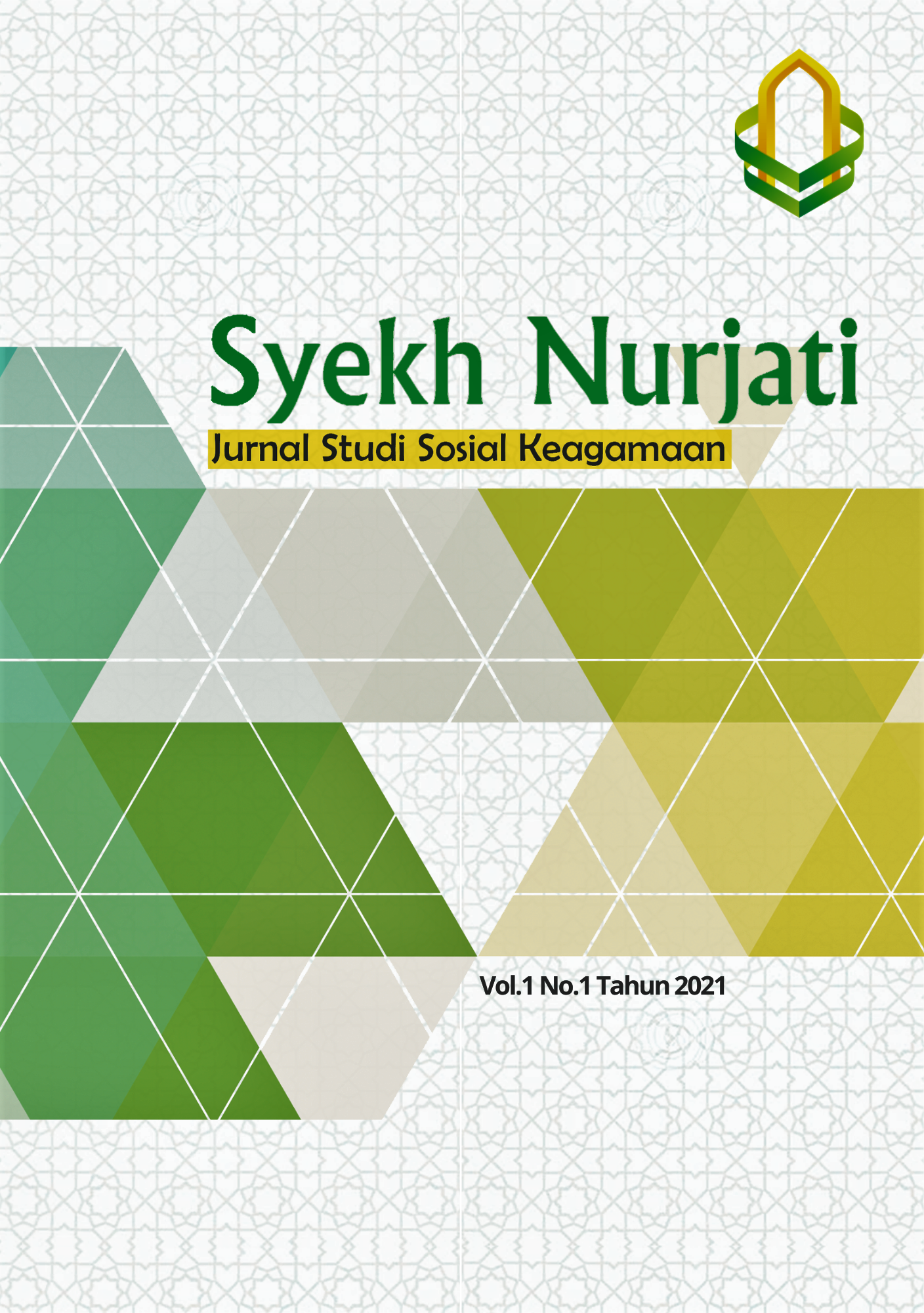Nusantara Tajwid Literature in Colonial Era Studi on Methodological Characteristics and Discourse of Anti-Colonialism in Naẓam Taḥsīnah by KH. Ahmad Rifa’i (1786-1875)
Abstract
This article discussed tajwid Naẓam Taḥsīnah by KH. Ahmad Rifa'i, one of the oldest recitation books in the archipelago, in addition to the position of KH. Ahmad Rifa'i is a scholar who pioneered the use of the pegon script in his writing on the one hand and as a colonial resistance movement on the other. This study used a socio-historical approach to see the context and explore the thoughts of KH. Ahmad Rifa'i in the book Naẓam Taḥsīnah and the context that surrounds it in the background of Dutch colonialism in the 19th century AD. Several stages are passed in the form of inventorying data, selecting and classifying it, then reconstructing and conducting a critical analysis of the basic assumptions. The results of these findings are; First, the background of Dutch colonialism which took place in the 19th century AD directly shaped the thinking of KH. Ahmad Rifa'i when writing Naẓam Taḥsīnah to carry out non-physical resistance with anti-colonial narratives inserted in his book. Second, the Naẓam Taḥsīnah has its own characteristics in composing the discussion of tajwid science, that using naẓam in Javanese pegon and containing anti-colonial narratives which conveyed through terms, such as pious scholars, pious scholars, infidels, and hypocrites. Those terms were aimed at the attitude of Dutch anti-colonialism as well as a form of non-physical resistance and secretive, but able to embrace students and the community.
References
Amin, Ahmad Syadzirin. 1989. Mengenal Ajaran Tarajumah Syaikh H. Ahmad Rifa’i dengan Mazhab Syafi’i dan I’tiqad Ahli Sunnah Waljamaah. Jakarta: Jamaah Masjid Baiturrahman.
Atamimi, Abdul Basit. 2019. “Political Thinking and Attitude of Religion: Study of Political Resistance of Kiai Ahmda Rifa’i Kalisalak Al-Jawi on Colonialism of the Netherlands.†Jurnal Akademika Vol. 15(2).
Azra, Azyumardi. 2018. Jaringan Ulama Timur Tengah dan Kepulauan Nusantara Abad XVII Dan XVIII: Akar Pembaruan Islam Indonesia. Depok: Prenamedia Group.
Bruinessen, Martin van. 2015. Kitab Kuning, Pesantren dan Tarekat. Yogyakarta: Gading Publishing.
Darban, Adaby. 2004. Rifa’iyah: Gerakan Sosial Keagamaan di Pedesaan Jawa Tengah Tahun 1950-1982. Yogyakarta: Tarawang Press.
Fikri, Ibnu. 2014. Aksara Pegon: Studi Tentang Simbol Perlawanan Islam di Jawa pada Abad XVIII-XIX. Semarang: IAIN Walisongo. Laporan Penelitian DIPA.
Hidayani, Fika, "The Principles of Sharia Economic Law in Tasyrihah al Muhtaj Manuscripts by K.H. Ahmad Rifa'i", Jurnal Karsa, Vol. 26, No. 2, 2018.
Jamil, Abdul. 2001. Perlawanan Kiai Desa: Pemikiran dan Gerakan Islam KH. Ahmad Rifa’i Kalisalak. Yogyakarta: LKiS.
Majidun, Ahmad. 2020. “Tarjumah (Kajian terhadap Pandangan Keagamaan dan Ajaran Ahmad Rifa’i dalam Ri’ayat al-Himmat Dan Husn al-Mithalab).†Jurnal Wahana Islamika Vol. 7(1).
Muftadin, Dahrul. 2017. “Fikih Perlawanan Kolonialisme Ahmad Rifa’i.†Jurnal Penelitian Vol. 14(2).
Nasution, Harun. 1975. Pembaharuan dalam Islam, Sejarah Pemikiran Dan Gerakan. Jakarta: Bulan Bintang.
Noviani, Nur Laili, dkk, "Naskah-Naskah Karya K.H. Ahmad Rifa'i Kalisalak di Kabupaten Wonosobo", Jurnal Jumantara, Vol. 12, No. 2, 2021.
Ricklefs, M.C. 1992. Sejarah Indonesia Modern. Yogyakarta: Gadjah Mada University Press.
Rifa’i, Ahmad. t.th. Naẓam Taḥsīnah. t.tp: t.p.
Steenbrink, Karel A. 1984. Beberapa Aspek Tentang Islam di Indonesia Abad Ke-19. Jakarta: LP3ES.
Suparno, Darsita, ""Deiksis" dalam Nazam Tarekat Karya K.H. Ahmad Ar-Rifai Kalisalak Tinjuan Pragmatik", Jurnal Dialektika, Vol. 3, No. 2, 2016.
Syafaah, Aah. 2020. “Memahami Bentuk Gerakan Perlawanan Rakyat Dalam Perang Kedongdong (1802-1818 M).†Jurnal Tammadun Vol. 8(2).









